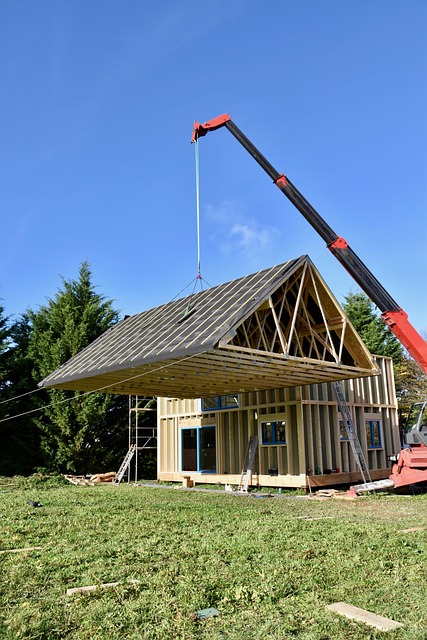Bespoke carpenters offer a unique blend of artistry and precision to create customized woodwork that is both functional and aesthetically pleasing. These skilled professionals have a deep understanding of various woods and modern technology, ensuring they deliver tailored so…….
Category: carpenters
Understanding Carpenters
Carpenters are skilled tradespeople who specialize in the design, creation, and construction of wooden structures and items. From ancient times to the present day, carpenters have played a pivotal role in shaping our built environment, crafting everything from homes and furniture to bridges and ships. The core components of being a carpenter encompass a deep understanding of materials, a proficiency in using tools and machinery, and an ability to interpret architectural designs.
Historically, carpenters have been among the most revered artisans due to their critical role in building communities and civilizations. In ancient Egypt, for instance, carpenters were responsible for constructing not only homes but also monumental structures like pyramids. In medieval Europe, guilds of carpenters were integral to both the structural integrity of towns and cities and the aesthetic appeal of their churches and palaces.
Global Impact and Trends
The global impact of carpenters is profound and multifaceted. Today’s carpentry landscape is shaped by several trends, including a growing emphasis on sustainability, the use of innovative materials, and the integration of smart technology in wooden structures. The demand for eco-friendly homes and offices has led to a rise in green construction practices, where carpenters focus on reducing waste and utilizing renewable resources.
In developing countries, the role of carpenters is crucial in addressing housing shortages with cost-effective solutions. In contrast, developed nations are witnessing a shift towards high-end custom furniture making, reflecting a trend towards personalization and artisanal craftsmanship. The global spread of carpentry skills and knowledge has also led to the emergence of international collaboration, where best practices and innovative techniques are shared across borders.
Economic Considerations
Carpenters contribute significantly to economic systems worldwide. They play a vital role in various sectors, from construction and manufacturing to retail and specialized craftsmanship. The market dynamics for carpentry services and products fluctuate based on economic conditions, housing markets, and consumer preferences. Investment patterns in the real estate and renovation sectors directly impact the demand for carpenters’ skills.
In terms of economic contribution, the carpentry industry generates employment opportunities at multiple skill levels, from apprentices to master craftsmen. It also stimulates ancillary industries by requiring a wide range of tools, materials, and machinery. The economic value of carpentry extends beyond its direct output, influencing other sectors through interdependence and innovation.
Technological Advancements
Technology has revolutionized the field of carpentry, introducing new methods and materials that enhance efficiency, precision, and sustainability. Computer-aided design (CAD) software allows for intricate designs to be brought to life with greater accuracy. Laser measurement tools have improved the speed and quality of on-site measurements. Robotics and automation are increasingly being used in mass production settings, while 3D printing technology is enabling the creation of complex wooden objects layer by layer.
The future potential of technological advancements in carpentry is vast, with ongoing research into materials like cross-laminated timber (CLT) that offer strength and sustainability. The integration of smart technology within wooden structures could lead to buildings that adapt to their occupants’ needs and respond to environmental conditions.
Policy and Regulation
The policies and regulations governing carpentry are diverse and can vary significantly by region and country. These frameworks dictate everything from safety standards and environmental protections to qualifications for professionals. In the European Union, for example, there are strict regulations on timber sourcing to prevent illegal logging. In the United States, the Occupational Safety and Health Administration (OSHA) sets forth guidelines to ensure a safe working environment for carpenters.
These policies not only protect workers and the environment but also shape the industry by setting standards for quality and innovation. They encourage carpenters to adopt sustainable practices and embrace new technologies that adhere to regulatory requirements.
Challenges and Criticisms
Carpenters face several challenges, including adapting to rapidly changing technology, meeting sustainability goals, and ensuring the longevity of their craft in the face of mass-produced alternatives. The industry also faces criticism regarding its environmental impact, particularly concerning deforestation and waste production.
To overcome these issues, carpenters must prioritize sustainable sourcing of materials, minimize waste through efficient design and production practices, and advocate for responsible policies that protect both workers and the environment. Investment in training and education is crucial to ensure that the next generation of carpenters is equipped with the skills necessary to meet these challenges head-on.
Case Studies
-
Passivhaus Standards in Germany: Carpenters in Germany have excelled in constructing Passivhaus buildings, which are energy-efficient homes that require little energy for heating and cooling. These case studies demonstrate the potential for carpentry to significantly reduce energy consumption and carbon footprints.
-
Green Building Movement in North America: The movement towards sustainable building practices has seen American and Canadian carpenters adopting green building standards, such as LEED certification, showcasing their commitment to environmental stewardship.
-
Artisanal Revival in Japan: The tradition of Japanese joinery, known as ‘yosegi,’ has experienced a resurgence, with carpenters combining ancient techniques with modern design to create stunning furniture and architectural elements.
Future Outlook
The outlook for the carpentry industry is positive, driven by a growing appreciation for craftsmanship, sustainability, and the role of wood as a versatile and renewable material. The demand for skilled carpenters is likely to increase as consumers seek out personalized, high-quality products and as the construction sector expands to meet housing needs worldwide.
Carpenters who can adapt to the evolving landscape by embracing new technologies and sustainable practices will be well-positioned to succeed in the years to come. The industry’s future is one of innovation, with carpenters at the forefront of shaping the built environment in ways that are both beautiful and responsible.
FAQs
-
What skills do carpenters need to succeed in the modern industry?
- A combination of traditional woodworking skills and proficiency with modern tools and technologies, such as CAD software and digital measuring instruments.
-
How is sustainability impacting the carpentry industry?
- Sustainability is driving changes in material sourcing, waste management, and design approaches to minimize environmental impact.
-
What are some of the challenges faced by carpenters today?
- Adapting to new technologies, meeting sustainability goals, and ensuring quality craftsmanship in a competitive market are among the key challenges.
-
How can carpentry be both sustainable and profitable?
- By sourcing responsibly, minimizing waste, and adopting innovative materials and construction methods that align with market demands for eco-friendly products.
-
What role do carpenters play in the future of housing?
- Carpenters are essential in creating sustainable, energy-efficient homes that meet the growing demand for environmentally friendly living spaces.
The world of carpentry is an ever-evolving landscape where tradition meets innovation. As we look to the future, it’s clear that the role of carpenters will continue to be critical in shaping our built environment with a blend of skill, sustainability, and technological advancement.
Carpenter’s Guide to Perfect Window Installation and Airtight Sealing
Carpenters are essential professionals responsible for expertly installing and sealing windows in both residential and commercial buildings. Their role involves precise measurement, cutting, and understanding of a structure's design and window material selection to ensur…….
Carpenter’s Precision Playbook: Measuring, Cutting, and Assembling for Mastery
A carpenter's foundational skill lies in precise measurement and marking, which are indispensable for accurate woodworking projects. Essential tools range from basic ones like tape measures and rulers to advanced laser distance measurers. Techniques for transferring mea…….
Mastering Traditional and Modern Carpentry: The Craft of Intricate Joinery
Traditional carpentry continues to flourish with modern twists, as skilled carpenters blend age-old joinery techniques with contemporary materials and technology. These artisans, who hold a deep understanding of wood characteristics and the precision required for elaborate w…….
Mastering Staircase Elegance: A Carpenter’s Guide to Design and Material Selection
A skilled carpenter excels in designing and crafting bespoke staircases, integrating artistic creativity with precise technical skills. The process starts with assessing the building's structure, user needs, and client preferences to ensure both aesthetic satisfaction an…….
Carpenter’s Craft: Perfecting Moldings, Trim, and Door Frames for Home Beauty
Proficient carpenters are essential for creating sophisticated moldings, trim, and door frames that enhance both the aesthetic appeal and structural integrity of buildings. Their expertise in selecting appropriate materials, mastery of precise measurement and cutting, and un…….
Revitalize Your Deck: Expert Carpentry for Transformative Outdoor Living Spaces
When looking to revitalize or upgrade your deck, porch, or outdoor living space, hiring a skilled carpenter is key. They assess the structural integrity, perform necessary repairs, and offer design advice to enhance both functionality and aesthetics. A carpenter's expert…….
Artisanal Staircase Craftsmanship: Safety, Design, and Timber Selection by Skilled Carpenters
This TL;DR covers the meticulous process of custom staircase design and construction by skilled carpenters, highlighting their ability to blend aesthetic artistry with functional craftsmanship. The carpenter's role is pivotal from the initial client consultation to the …….
Mastering Wood Finishing Techniques with Stains, Varnishes, and Expert Carpentry Insights
In the field of wood finishing, carpenters have a variety of options to enhance and protect wood surfaces. Stains are chosen for their ability to subtly tint wood while maintaining its natural texture and beauty, available in translucent to semi-transparent shades. Varnishes …….
Mastering the Artisan’s Craft: Bespoke Carpentry Solutions by Expert Carpenters
This section outlines the detailed process of bespoke carpentry, emphasizing the artisan skills of expert carpenters who craft custom furniture tailored to client visions. Unlike mass-produced items, these pieces are made with high-quality materials and traditional joinery t…….









